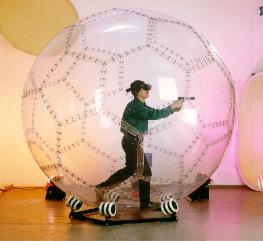It’s one of the great philosophical debates of all time. Given enough computing horsepower, would we know the difference between the real world and a simulated one? With the cost of bandwidth, computing, and storage dropping precipitously, it’s harder and harder to tell the real from the simulated.
Check out the Lagoa Multiphysics plugin for Softimage. It’s pretty impressive. Tools like this do for interactive visualization what still-image tools like Photofuse do for traditional photographs.
You might argue that to really trick us into believing the world around us was a simulation, each particle the software represented could only consume one particle of computing infrastructure. But isn’t that what the universe looks like? And did I just blow your mind?







 @
@ Tags:
Tags: 




 Like all images on the site, the topic icons are based on images used under Creative Commons or in the public domain. Originals can be found from the following links. Thanks to
Like all images on the site, the topic icons are based on images used under Creative Commons or in the public domain. Originals can be found from the following links. Thanks to